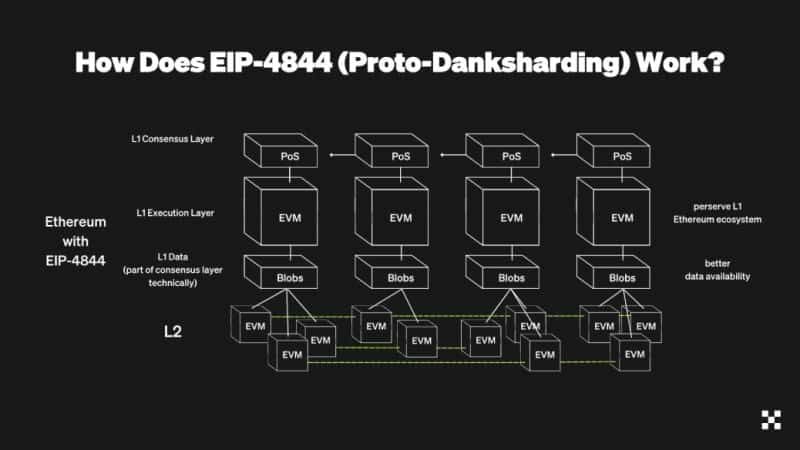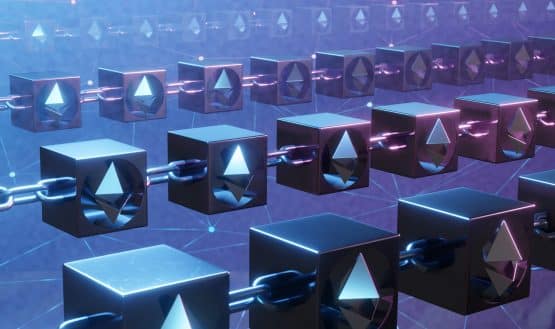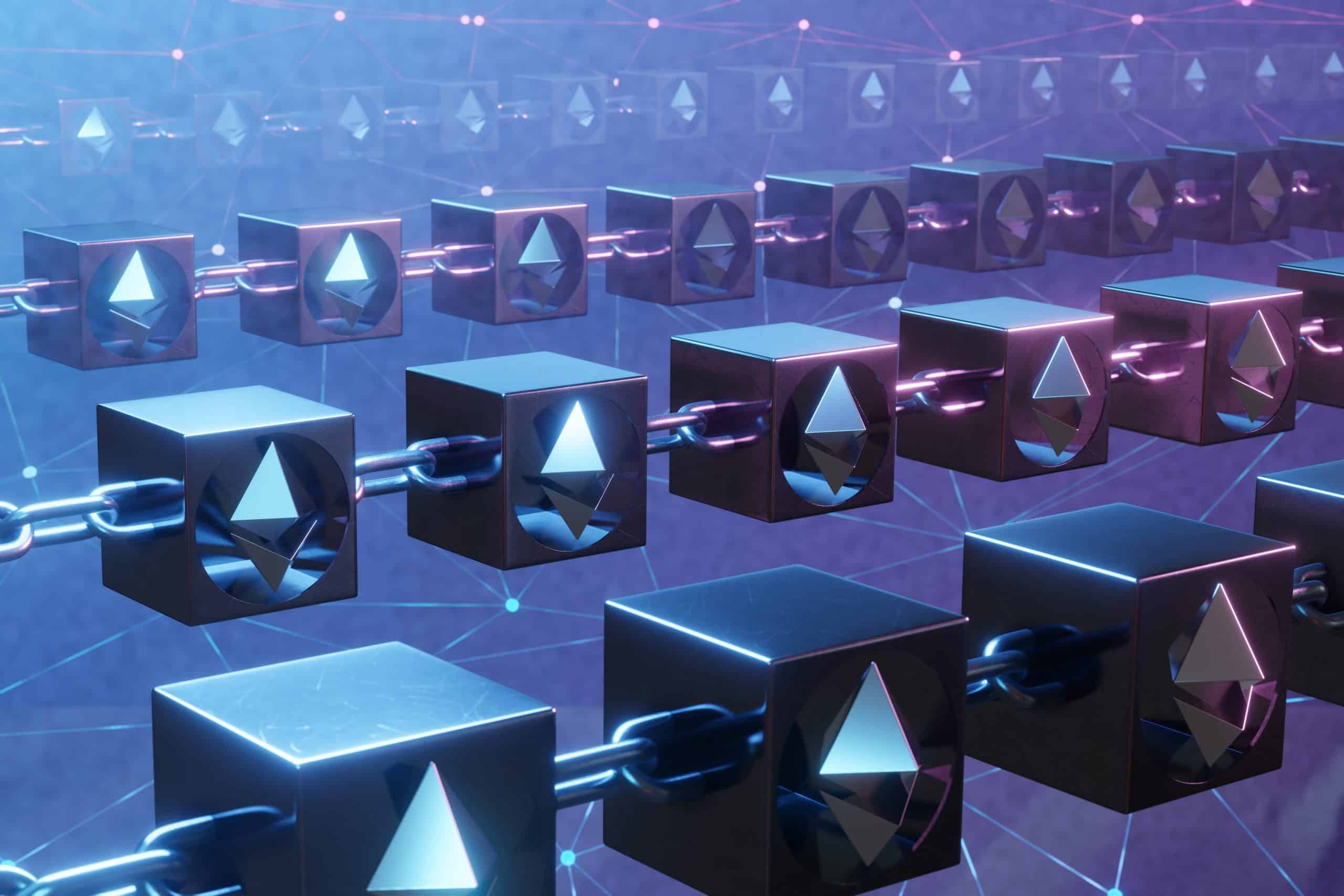As the Ethereum network continues to grow, scalability is becoming an increasingly serious problem. Transaction fees on the network are simply too high for many users, driving them to other Layer 1 blockchains. One of the proposed solutions to this issue is danksharding, a relatively new approach that promises to improve the network’s capacity and performance.
In this article, we will take a closer look at the basics of danksharding, why it is needed, and how it could help solve Ethereum’s mounting scalability problem.
What Is Danksharding?
Before we dive into danksharding, you need to understand the concept of sharding. Sharding is a method used to split a network into smaller, more manageable pieces called ‘shards.’ The idea is to create shards that are each capable of processing the network’s transactions and data.
You can think of sharding as dividing a project among different teams to handle tasks more efficiently. In theory, it increases a network’s ability to process more data and transactions without slowing down.
Danksharding takes the concept of sharding a step further. It is designed to be more efficient and to allow Ethereum to scale more effectively. Unlike traditional sharding methods that split data storage and computation, danksharding combines both into a more advanced, streamlined approach. The result is a smoother, faster process.
Why is danksharding necessary, then?
Ethereum’s scalability has been a major challenge for many years now. As more people join in to use the Ethereum network, the speed has decreased, and the cost of Ethereum transactions has skyrocketed.
We could simply increase Ethereum’s block size to solve this problem, but critics argue that this would harm the network’s decentralization by making it harder for individuals to run full nodes. This debate has been raging for almost a decade now, though it previously focused on whether to increase Bitcoin’s block size.
Vitalik Buterin, Ethereum’s co-founder, has long advocated for affordable transaction fees on blockchain networks. In 2017, he commented on RyanSAdam’s X post, sharing that the cost of transactions should not exceed 5 cents. His vision remains focused on reducing blockchain costs, which is why Ethereum has since focused on solutions like danksharding and proto-sharding.

Danksharding addresses both major problems with the Ethereum blockchain: high fees and slow transaction speeds. Thanks to this method, Ethereum researchers can put the network in a better position to compete in the blockchain ecosystem without sacrificing decentralization.
The key element in danksharding is data availability sampling, which enables a more efficient access to transaction data without overwhelming Ethereum’s nodes.
If you’re interested in learning more about this topic, the video below features Vitalik Buterin discussing the benefits of danksharding for Ethereum’s scalability:
How Does Danksharding Work?
Interestingly, the term danksharding isn’t a reference to the colloquial term ‘dank,’ but is actually named after the two Ethereum researchers who first proposed the idea, Dankrad Feist and Protolambda. An Ethereum improvement proposal (EIP) for the upgrade is currently in the making.
To understand how it works, let’s break it down into simpler parts. This is a more technical concept, but we can still cover the key points without getting too deep into the weeds.
The Role of Data Blobs in Danksharding
Data blobs are the base of danksharding. A blob is a large chunk of data that’s not directly processed by Ethereum nodes, but is instead stored and passed around efficiently. Think of it as a box of data that’s too large for one node to handle on its own.
By using blobs, the network can scale without overwhelming any single node. The network can store data temporarily, therefore avoiding network congestion.
A blob carrying transactions can help Ethereum avoid the need for every node to process every transaction. Instead, the nodes can focus on validating certain parts of the networks, and blobs handle the heavy lifting for them.
Validators and Proposers in Danksharding
In a traditional Ethereum network, validators verify the transactions and maintain the blockchain’s integrity. In the case of danksharding, this role also includes proposers.
A proposer is responsible for assembling data blobs, submitting them to the network, and making sure they are added correctly to the blockchain.
Once the proposer’s job is done, the validator will jump in to check the blocks and blobs proposed by the proposer. This reduces the network’s load and keeps things running smoothly.
Danksharding is incredibly complex in its implementation, but at its core, it mostly boils down to simple delegation. Validators don’t need to process data all by themselves. They are left with the sole task of verifying the blobs’ integrity.
Computation and Storage
Danksharding stands out because it combines computation (processing transactions) and storage (data blobs) more efficiently compared to traditional sharding. In traditional sharding, these are separated, meaning there is extra work to synchronize everything together.
Danksharding simplifies the process since it integrates both aspects into one process. The integration of computation and storage allows for better data throughput and helps the Ethereum network handle far more transactions than usual, all while maintaining decentralization.
Why Is Danksharding So Important?
The main reason danksharding is so important these days is that it can easily process Ethereum transactions and address the network’s scalability issue.
Ethereum’s main issues lie in its rollup transaction costs and the scalability of the main Ethereum network. High costs and slow speeds are by far the biggest problems for the Ethereum blockchain. Danksharding provides a scaling solution by making the network more adaptable to high transaction volumes.
In short, danksharding makes Ethereum more scalable, cheaper to use, and faster.
What Is Proto-Danksharding?
Proto-danksharding, also known as EIP-4844, is a significant step in Ethereum’s journey toward full danksharding. This has been implemented as part of the Ethereum Dencun upgrade that was implemented on March 13, 2024. Proto-danksharding introduces an entirely new transaction type that carries blobs of data.

Why Not Jump Straight to Danksharding?
If danksharding is so useful, why do we take it so slowly to implement it into Ethereum?
Implementing full danksharding is a complex, not to mention resource-intensive process. This is why researchers have come up with proto-danksharding as an interim solution. They did it to build out the necessary infrastructure and testing ground for an eventual full implementation of danksharding.
By introducing blob data and the associated transaction logic right now, Ethereum can somewhat reduce its current scalability issues while preparing for bigger, more complex changes that will come with a full implementation of danksharding.
Let’s take a closer look at the key differences between full danksharding and proto-danksharding.
| Feature | Proto-Danksharding | Full Danksharding |
| Data handling | Introduces blobs stored off-chain | Implements full sharding using multiple shards |
| Complexity of implementation | Moderate | High |
| Improvement in scalability | Significant | Massive |
| Rollup support | Improved | Fully optimized |
| Launch date | March 13, 2024 | TBD |
Other Important Ethereum Upgrades
Ethereum’s scaling roadmap is structured around six major phases, according to Vitalik Buterin’s 2024 blog series “Possible Futures of the Ethereum Protocol,” namely:
- The Merge: Ethereum moved from Proof-of-Work to Proof-of-Stake, which was completed in 2022. Future plans include faster block confirmation and lower requirements for staking.

- The Surge: Focuses on scaling via blobs, PeerDAS, and eventually full danksharding.

- The Scourge: Tackles centralization in block production with solutions like encrypted mempools and inclusion lists.

- The Verge: Introduces stateless clients using cryptographic proofs like Verkle trees.

- The Purge: Clears out unnecessary history and code to make the network lighter and easier to maintain.

- The Splurge: Adds finishing touches like fee stabilization, account abstractions, and enhancements in securities (such as quantum resistance).

Ethereum’s roadmap includes continuous upgrades, such as the Dencun upgrade from March 2024. Right now, several upgrades are lined up, each targeting important aspects like scalability and usability. Let’s take a look at the most important ones:
Pectra Upgrade (May 7th, 2025)
The Pectra upgrade combines the Prague and Electra upgrades. This upgrade is focused on Ethereum’s scalability and efficiency. Its key features include:
- Account abstraction (EIP-3074): The idea is to allow wallets to behave like smart contracts. This means that you can recover your lost keys or set spending limits on Ethereum.
- Social recovery improvements: Users will be able to regain wallet access with trusted parties without the need to rely on seed phrases.
- Validator decentralization: By reducing the ETH needed to stake, more people can help secure the network.
PeerDAS (Included in Pectra)
PeerDAS is expected to be part of the Pectra upgrade and aims to improve how Ethereum manages blobs, all while keeping the costs as low as possible. By optimizing block space and data availability, PeerDAS will support the scalability of Layer 2 solutions.
The idea is to make it easier for Layer 2s like Arbitrum, Optimism, and Base to store and verify data without overloading the Ethereum mainnet. PeerDAS will also enable Ethereum to scale to hundreds of thousands of transactions per second without increasing costs.
Fusaka Upgrade
The Fusaka upgrade is currently under discussion. Ideally, it will further refine the network’s scalability and efficiency. Following Pectra, this upgrade is still in the planning stages. Developers are working on its scope, but it is discussed as the potential next major upgrade to follow Pectra.
With the Fusaka upgrade, Ethereum developers are looking at further refinement in scalability mechanisms, possibly building on PeerDAS and earlier sharding features.
The Future of Ethereum – Our Verdict
The Ethereum network is on a clear path toward improved scalability and lower transaction costs, which are the two biggest issues it has experienced in recent years. The implementation of modern solutions such as danksharding is already underway.
Proto-danksharding has already laid the groundwork for said improvements, and upcoming upgrades like Pectra and PeerDAS will keep building upon this foundation.
These updates should allow Ethereum to process transactions more efficiently and, ultimately, enhance the network’s performance.
In the next few years, the major turning points for Ethereum will most likely be the successful implementation of full danksharding, as well as the development of Layer 2 solutions. Block builders will play a major role in streamlining the processes, making sure that the Ethereum network meets the growing demands of the blockchain ecosystem.
FAQ
Why is danksharding necessary for Ethereum?
The Ethereum network faces issues with high fees and slow transaction speeds. Danksharding addresses these problems by enhancing the network's scalability and making it faster and cheaper to use.
How does danksharding differ from traditional sharding?
Unlike traditional sharding, which separates data storage and computation, danksharding integrates both. This allows for faster and easier processing of data.
When will danksharding be fully implemented?
Danksharding will be gradually rolled out, with proto-danksharding already being introduced in 2024. Full implementation should take place in the coming years.

